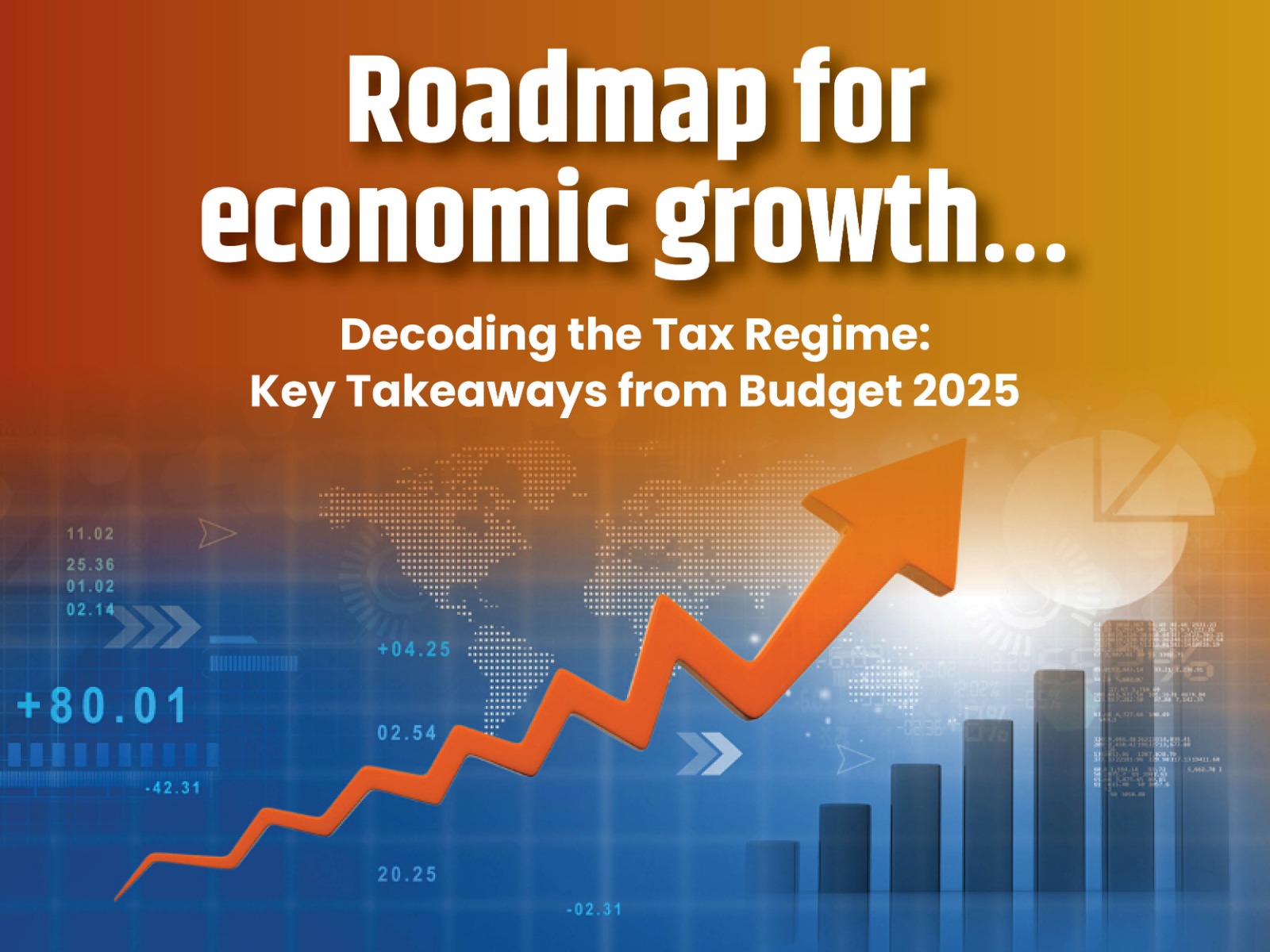Roadmap for economic growth…
|

Decoding the Tax Regime: Key Takeaways from Budget 2025
‘A country is not just its soil; a country is its people.’ – the Finance Minister presented the Union Budget 2025-26 with the theme “Sabka Vikas” stimulating balanced growth of all regions. She initiated her speech with quoting Telugu poet and playwright Shri Gurajada Appa Rao’s famous sayings
In line with this theme, the Finance Minister outlined the broad Principles of Viksit Bharat to encompass the following:
- Zero-poverty
- Hundred per cent good quality school education
- Access to high-quality, affordable, and comprehensive healthcare
- Hundred per cent skilled labour with meaningful employment
- Seventy per cent women in economic activities
- Seventy per cent women in economic activities
The Union Budget 2025-2026 promises to continue Government’s efforts to accelerate growth, secure inclusive development, invigorate private sector investments, uplift household sentiments, and enhance spending power of India’s rising middle class. The Budget proposes development measures focusing on poor (Garib), Youth, farmer (Annadata) and women (Nari).
Simplified and concise tax laws
The proposed Income Tax Bill 2025 aims to reduce the complexity of India’s current tax framework. This includes simplifying the language of the direct tax laws, deleting obsolete and redundant provisions, and reducing litigation.
Based on the finance minister's statement, salary income up to Rs 12.75 lakh will be tax-free under the revised rebate and slabs in the new regime. In addition, salaried employees will be eligible for a standard deduction of Rs 75,000. Therefore, the new rebate and standard deduction introduced by the finance minister ensure that salary income up to Rs 12.75 lakh remains tax-free.
Encouraging voluntary compliance, Budget extends time-limit to file updated returns for any assessment year, from the current limit of two years, to four years. Over 90 Lakh taxpayers paid additional tax to update their income. Small charitable trusts/institutions have been given the benefit by increasing their period of registration from 5 to 10 years, reducing compliance burden. Further, tax payers can now claim annual value of two self-occupied properties as NIL, without any condition. Last budget’s Vivad Se Vishwas Scheme has received a great response, with nearly 33,000 tax payers having availed the scheme to settle their disputes. Giving benefits to senior and very senior citizens, withdrawals made from National Savings Scheme Accounts on or after 29th of August, 2024 have been exempted. NPS Vatsalya accounts also to get similar benefits.
Introduction of a unified ‘tax year’
A major structural change in the Income Tax Bill 2025 is the introduction of a standardized ‘Tax Year,’ indicating a 12-month period, which will replace the dual financial year (April to March) and assessment year system. This change is particularly beneficial for new businesses or professionals, as their tax year will commence from:
- The date they establish their business or profession
- The date they generate a new source of income
- No new changes to tax slabs, rates, return filing [i.e., retains Union Budget 2025 announcements]
The draft version of the Income Tax Bill 2025 includes no changes to the income tax slabs and rates (under the new tax regime) from those announced in the Union Budget 2025 for the fiscal year 2025-26. This move ensures continuity for taxpayers while simplifying the legislative framework.
Features of new tax regime
Following are the features of the new tax regime for individual taxpayers:
- New tax regime is the default tax regime. An individual has option to opt for the old tax regime in any financial year, provided there is no business income
- Currently, basic exemption limit of Rs 3 lakh for all individual taxpayers irrespective of their age. From April 1, 2025 (FY 2025-26), the basic exemption limit will be hiked to Rs 4 lakh - an increase of Rs 1 lakh
- Tax rebate under Section 87A makes zero tax payable for taxable incomes up to Rs 7 lakh currently. From April 1, 2025, tax rebate under Section 87A will be applicable for taxable incomes up to Rs 12 lakh, making them pay zero till income up to Rs 12 lakh
- Highest surcharge rate for those earning above Rs 2 crore is 25%. This remains same after Budget 2025.